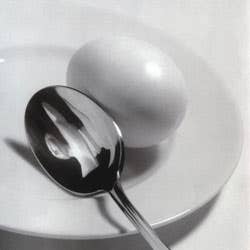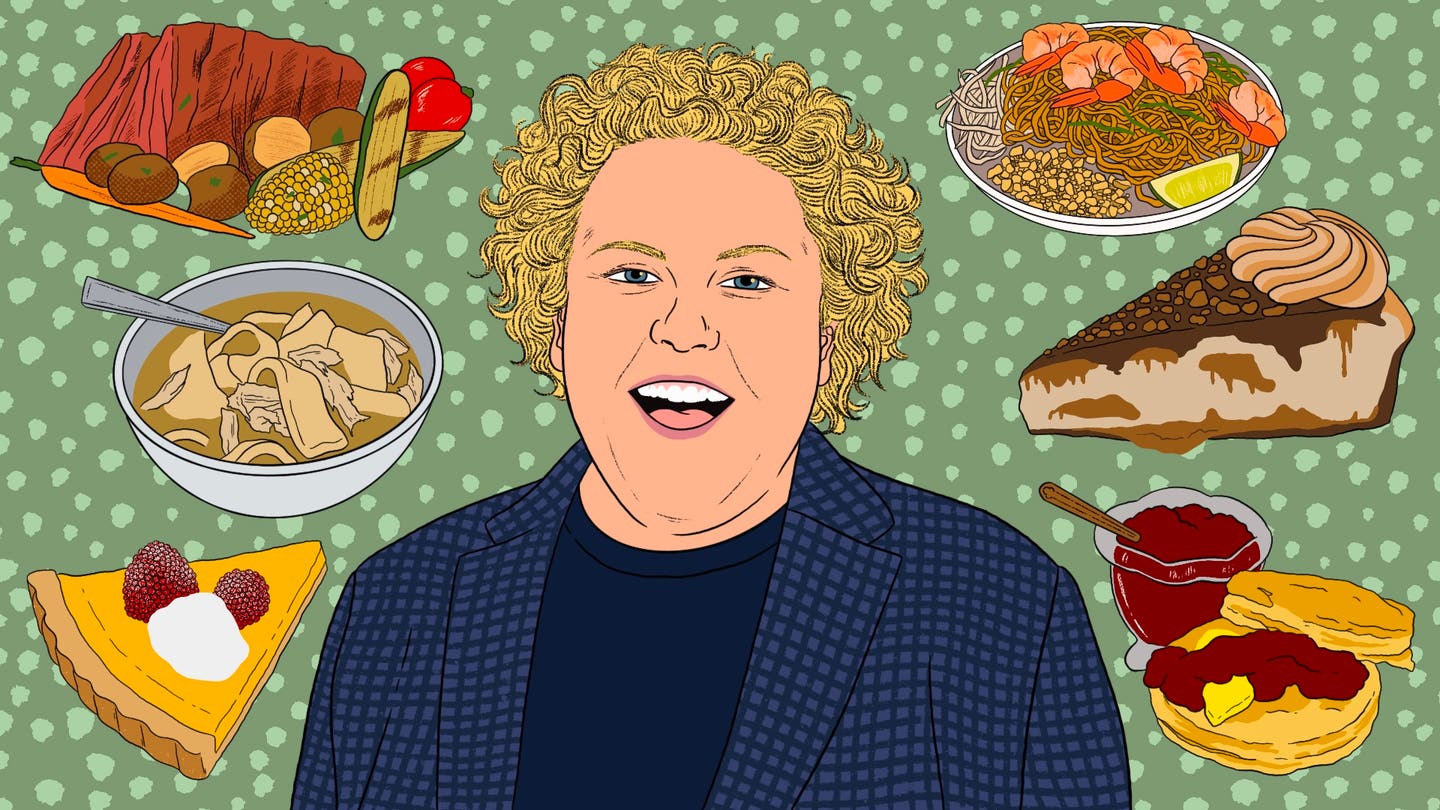
The Egg and Us
Despite suffering alarmist health scares over the years, the humble egg remains one of nature’s most perfect foods.
No one knows exactly when some daring cave dweller first sneaked an egg from a bird's nest, figured out how to cook it, and discovered that it tasted great. Some historians, though, think that wild jungle fowl, ancestors of today's chickens, were domesticated in India as early as 3200 B.C. Scrounging for eggs thus gave way to collecting them, and the egg was on its way to becoming a vital part of the human diet.
The egg is one of nature's simplest and most elegant pieces of design—so pure in structure that sculptor Constantin Brancusi once called it "the most perfect form of creation." It contains every vitamin except C, and has an ample protein content, including all nine essential amino acids. Most important of all, the egg is just plain good food—though to review its recent history, you'd think it was a culinary villain.
The ancient Greeks and Romans used chicken eggs (as well as those of more exotic species) in their cookery, but it was in medieval Europe, especially in France, that eggs first achieved high culinary status. The array of egg dishes developed by French chefs was so vast that Escoffier, in Le Guide culinaire, was able to give formulas for nearly 200 preparations of the thing—not counting an additional 77 recipes for omelettes—and the 19th-century Irish poet Thomas Moore once concluded an ironic defense of France by asking, "Yet, who can help loving the land that has taught us six hundred and eighty-five ways to dress eggs?"
Chefs, French and otherwise, quickly learned to prize eggs not only for their flavor, nutrition, and versatility as a main ingredient, but also for their unique culinary properties. Eggs have countless "hidden" uses in the kitchen, enriching and/or altering the physical construction of dishes in which their presence may not be immediately apparent. For instance, the yolks—composed of water, protein, vitamins and minerals, and all of the egg's fat—can thicken and emulsify sauces, bind forcemeats, and glaze pastries. The whites or albumens—made up of water, various proteins, minerals, traces of vitamins and other substances—are used to clarify stocks and to add volume and lightness to batters and doughs.
The chicken egg enjoys such great worldwide popularity today largely because the hen is what is known as an "indeterminate layer." This is not a negative comment on the regularity with which the fowl produces eggs—quite the contrary. It simply means that, unlike most other birds, which produce a certain number of eggs and then stop, chickens will keep laying eggs until their nests are full. It takes a hen from 24 to 26 hours to produce an egg; 30 minutes after one is laid, the tireless worker begins the whole process again.
Egg farming has changed dramatically. Before World War II, most eggs were produced from farm flocks of fewer than 400 hens. With increasingly sophisticated mechanical equipment and improved feeding technology, however, came the inevitable shift to giant commercial operations. Today, flocks of 100,000 laying hens are not at all unusual, and some flocks number more than one million. And, while eggs were once laid mostly during the spring and summer months, they are now produced year-round by hens in giant hangars, called laying houses, where the light is carefully regulated to fool them into thinking that every day is a 12-hour summer delight.
Hens are usually fed a standard diet of mash made of sorghum grains, corn, cottonseed meal, and soybean oil. Some companies feed their hens seaweed in the hope of producing eggs high in iodine, or fish meal and fish oil for eggs rich in omega-3 oils.
The hen has a relatively short productive life. At about five months of age, she will begin laying, and over the course of the next year or two will produce somewhere between 350 and 450 eggs. The number and quality of the eggs decrease as the hen grows older. When her laying days are done, she'll be sent off to the slaughterhouse, destined for the stockpot.
Such industrial production of eggs may seem heartless to some—it certainly lacks the poetic charm of seeking warm eggs deposited at the whim of mother hens scratching around some homey barnyard—but it does ensure a regular supply of fresh, healthy eggs to the consumer. And the small-henhouse approach would hardly supply our country's appetite for eggs: Some 300 million chickens lay for us daily in the United States in order to keep up with our national demand.
Still, the image of batteries of hens in captivity, obediently rolling eggs down a chute with metronomic regularity, is not a happy one. In reaction, some folks have started raising "free-range" hens, who are allowed to wander outdoors but fed—not forced to forage— regularly. And many poultry farmers have begun what is known in industry terms as "floor operations". Kept indoors—but not in cages—and fed a controlled diet, these chickens are given the run of the laying-room floor. While the hens may no doubt prefer these arrangements—and while the flesh of free-range chickens is generally more flavorful than that of the battery-raised variety—there is no difference in the taste of the eggs.
What seems to concern most Americans today, of course, isn't how eggs are produced. It's a far more basic question: How safe are eggs to eat? Eggs have been under attack in recent years—both for their admittedly high cholesterol content and as possible carriers of the salmonella bacteria (Salmonella enteritidis).
Eggs are undeniably high in cholesterol—one large egg has 213 milligrams of cholesterol, compared to 202 milligrams for an eight-ounce steak—but it is concentrated in the yolk, hence the popularity of egg white-only products.
The salmonella scare is another matter. Until recently, it was thought that the bacteria grew only in cracked eggs. In 1988, however, salmonella—which is rarely fatal but can cause a high fever, vomiting, and diarrhea—turned up in the insides of uncracked Grade A eggs in both England and the northeastern United States. This was unsettling, to say the least. But several mitigating factors must be considered: First, high temperatures (60° and above) kill salmonella, so there is little danger from the bacteria in properly cooked eggs. Second, even in the regions where the most contaminated eggs have been found, it is estimated that only one in 10,000 to 14,000 eggs is infected. Finally, the bacteria count even in contaminated eggs is generally quite small. If simple precautions are taken—storing eggs in a refrigerator below 40° and using them as fresh as possible (in no case more than five weeks after the packing date on the carton)—the danger of salmonella infection becomes minute.
As for eating raw eggs or those classic preparations that contain raw eggs—from mayonnaise to Caesar salad to tiramisu—it is frankly inadvisable for those who are pregnant, elderly, very young, or immunocompromised. For everyone else, eating eggs uncooked is one of those activities, like scuba diving or eating raw oysters or entering a relationship, in which each person must strike a balance between risk and reward.
Keep Reading
Continue to Next Story










